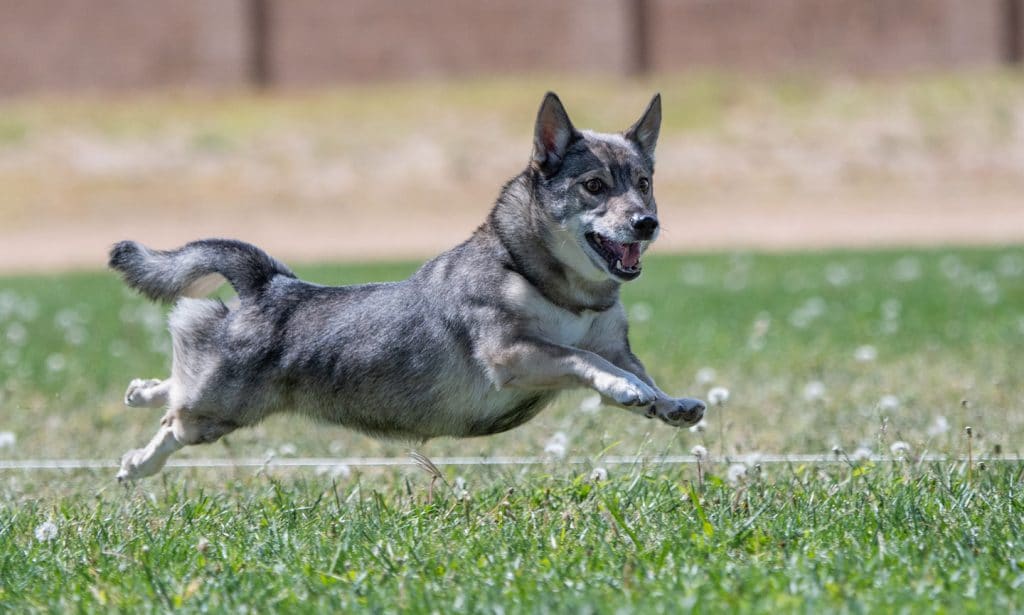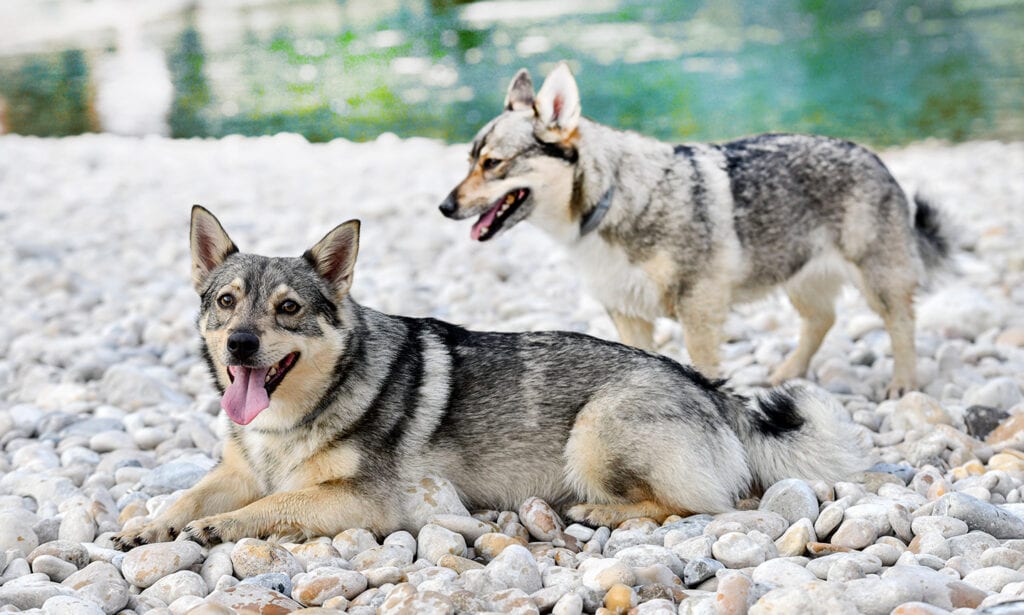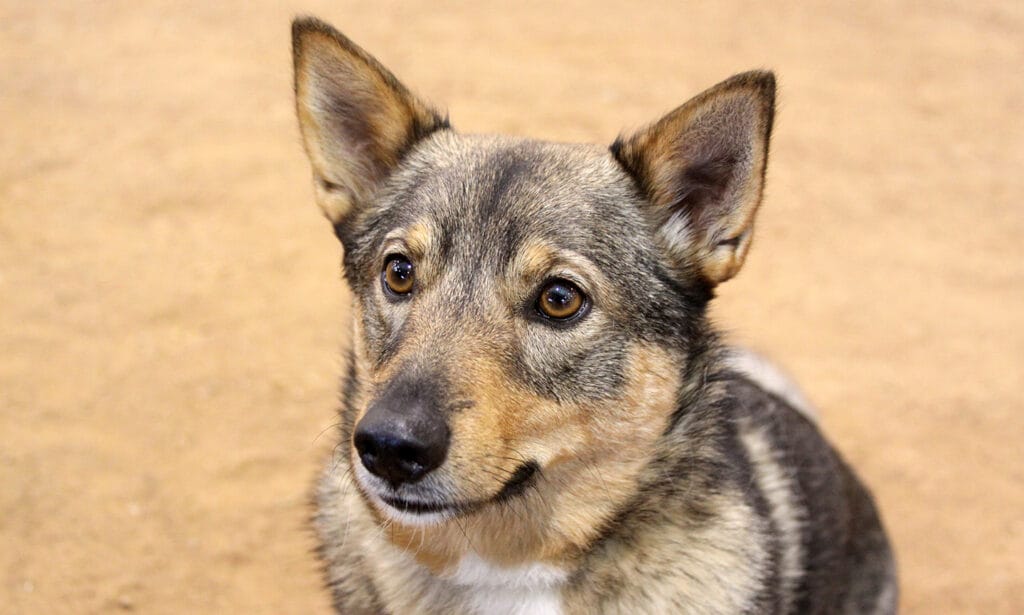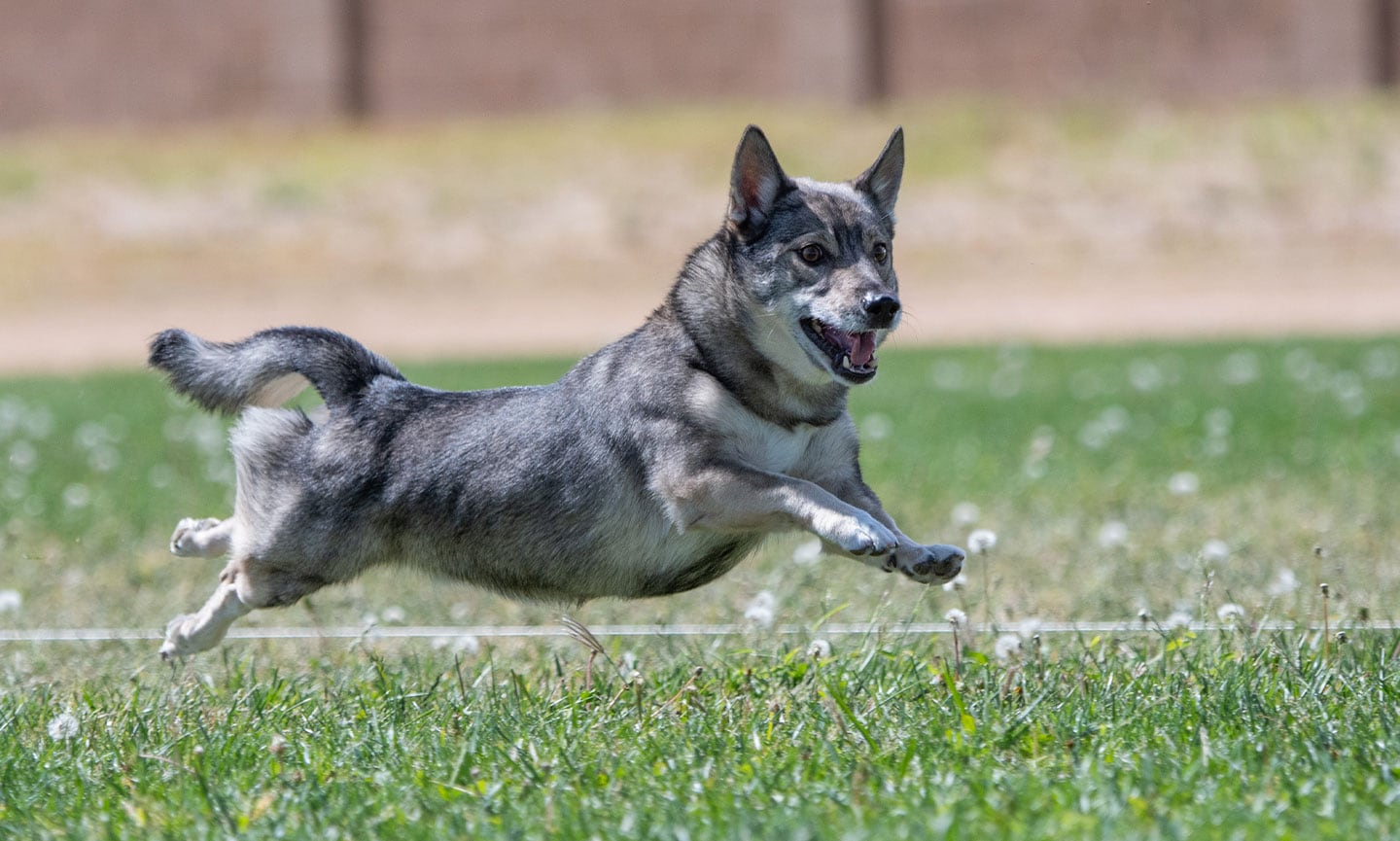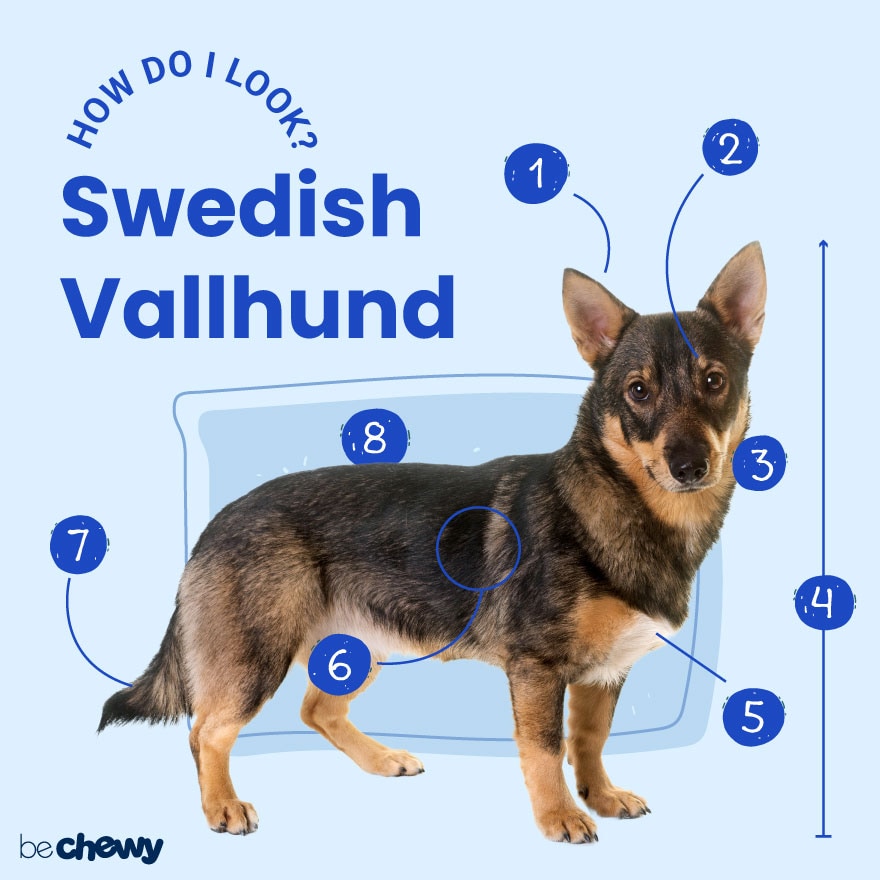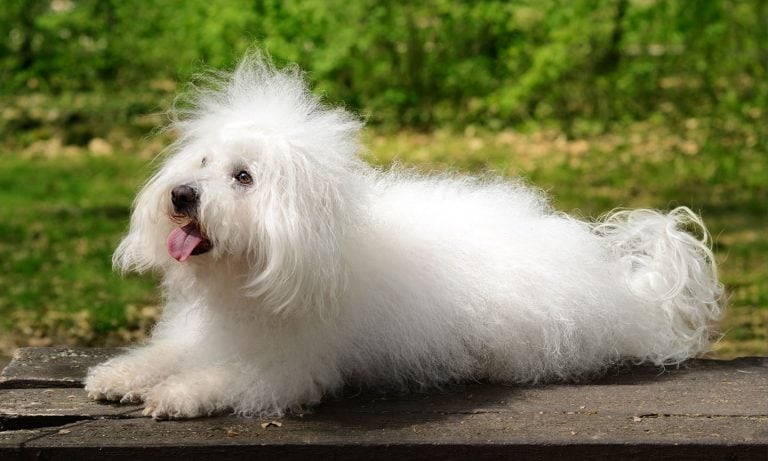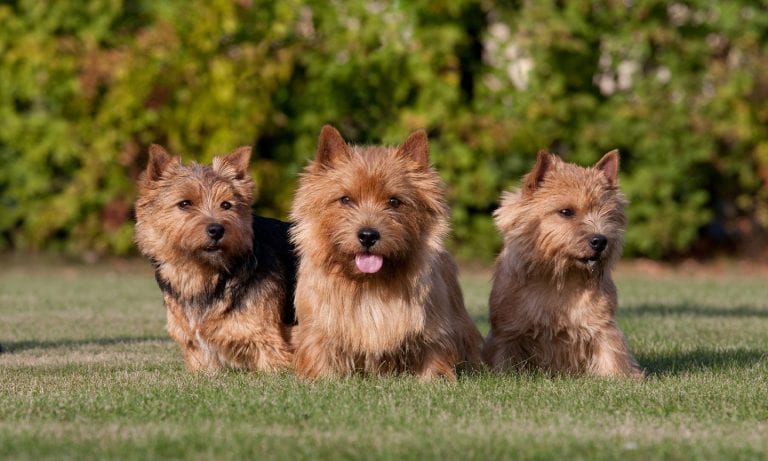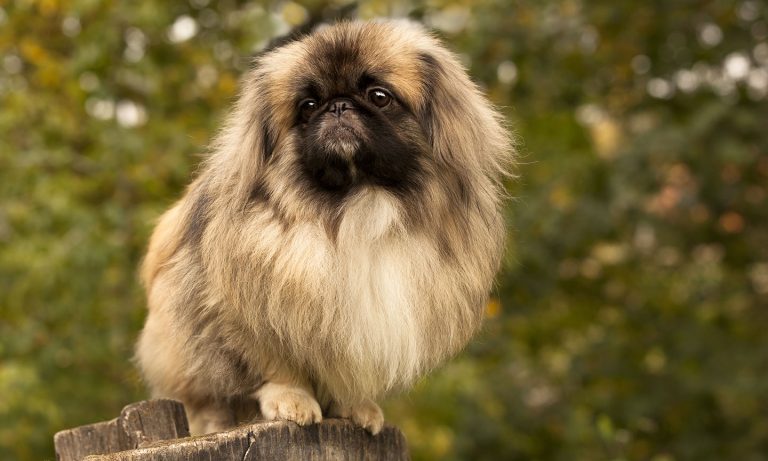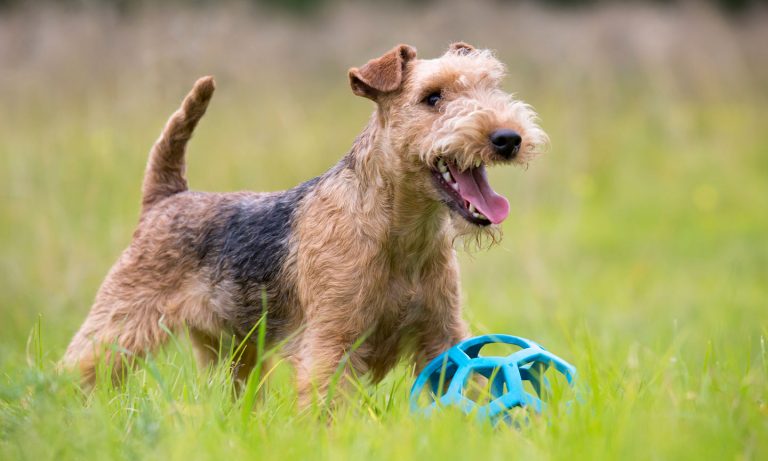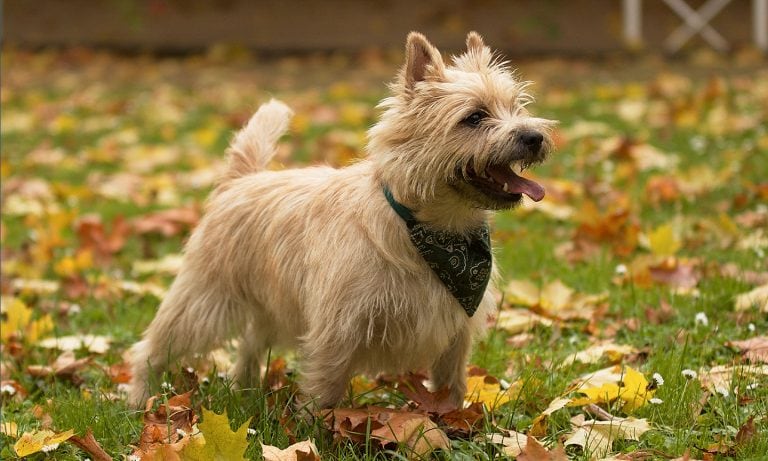Need someone to help you take over the world? Look no further than the newest Scandinavian superhero (no, not Thor), the small but mighty Swedish Vallhund. Bred to be herding dogs, these brave little warriors have an adventurous spirit and will follow you and your family anywhere you want to go, making friends every step of the way. You may not want to share all your secrets, as they are likely to spill your plans for world domination. (They just can’t help it. They love to talk!) But when these pups aren’t helping you conquer the world, they’ll curl up in your lap, making sure to conquer your heart.
Breed Snapshot
Temperament:
FearlessQuick LearnerLoyalCoat Color:
GrayRed
Best For
Small-but-mighty Swedish Vallhunds are best for active households (small and large!), and they thrive with pet parents and families who enjoy spending time outdoors. These smart, energetic and friendly dogs need regular exercise and mental stimulation, and they especially love training challenges.
Swedish Vallhund Temperament
Remember your classmate who always got yelled at by the teacher for talking in class? (Maybe it was you.) The Swedish Vallhund is that classmate, albeit in dog form. Whether announcing guests at the door or simply telling you about their day, one of their most charming traits is their need to communicate whatever is on their mind using their outside voice. (In addition to barking, they’ll “talk” with silly whines and groans.) A bit of training can easily help teach them to curb their endless canine chatter.
Properly socialized Vallhund dogs are happy to introduce you to new friends wherever you go (whether you were looking for new friends or not). Friendliness is one of their best qualities, but know that Swedish Vallhunds will not hesitate tell you if they feel you’re stepping out of line. Some might call it being a bit bossy, but the Vallhund prefers to see it as their duty as your loyal pal—and maybe a little shout-out to their deeply ingrained herding instinct from their cattle dog days.
Swedish Vallhunds and kids are a natural fit, as long as the two-legged little ones are taught how to gently play with their new four-legged sibling. Vallhunds also do well with cats and other pets in the home. But while family pets get the Vallhund’s love, Vallhunds take their duties as head of the neighborhood watch group seriously, and animals outside the home—whether the neighborhood cat or your neighbor’s dog—may not be as welcomed. So, be sure to socialize and train your Vallhund.
How to Care for a Swedish Vallhund
With their hearty Viking genes, Swedish Vallhunds are generally healthy, muscular dogs who are eager to make you their new BFF. That doesn’t mean everything will be a walk in the park with your new four-legged family member (though expect lots of those) because this is a high-energy breed who needs lots of playtime, training and activity.
Swedish Vallhund Health
Swedish Vallhunds live fairly long lives, with a life expectancy averaging 12-15 years. While they are a healthy breed, there are some health issues for you to be aware of—this way you can look for signs of them early on and get them treated quickly.
- Progressive Retinal Atrophy (PRA): Vallhunds suffer from a unique form of PRA known as Swedish Vallhund Retinopathy. One study found that up to 10 percent of Vallhunds were found to have this hereditary eye condition. Retinopathy can cause night-blindness in dogs and other vision issues, usually starting around the age of 10. Fortunately, researchers have identified the genetic markers behind this disease, and most reputable breeders now screen each Swedish Vallhund puppy for retinopathy. If you notice your dog is a bit reluctant to go out at night, a visit to a veterinary ophthalmologist can determine whether your dog has this condition and the best ways to mitigate it.
- Cataracts: Another eye issue the Vallhund breed may develop in their later years is cataracts, sometimes as a result of retinopathy. When proteins clump together within the lenses of the Vallhund’s eyes, it can block out the light and eventually cause blindness. Surgery is typically recommended for cataracts.
- Other Eye Issues: The Swedish Vallhund breed can suffer from several eye conditions besides retinopathy and cataracts, including distichiasis, corneal dystrophy, Persistent Pupillary Membranes (PPM), vitreous degeneration and retinal dysplasia. These conditions can affect your dog’s vision or cause their eyes to become irritated. A veterinary ophthalmologist can give you the best treatment options for these conditions after an exam.
- Hip Dysplasia: This is a genetic condition that is caused by the malformation of the hip sockets. It can lead to trouble walking and arthritis over time. Treatments include surgery, joint supplements and even lifestyle changes such as weight management.
Swedish Vallhund History
The Swedish Vallhund origin story starts 1,000-1,200 years ago when the Vikings were exploring the world with their Spitz dogs. At some point, these dogs mixed with the Welsh Corgis in Britain and the Swedish Vallhund breed or “Vikingarnas Dog” was born.
Originally bred for herding cattle and other livestock, these hardy working dogs were favorites on Swedish farms until 1942, when the breed almost disappeared. It was then that Bjorn von Rosen and K. G. Zettersten started the breeding program that would bring this dog back from the brink of extinction. Soon after, in 1943, the breed was officially recognized by the Swedish Kennel Club.
It wouldn’t be long before the little Viking dogs or Vastgotaspets (as they were called in Sweden) came to the United States. In 1983, the first of several Vallhunds was brought to the US, and soon after, the first litter of Swedish Vallhund puppies was whelped by Marilyn Thell at the Jonricker Kennel in 1986. Later, the American Kennel Club officially recognized the Swedish Vallhund (literally translated to Swedish herding dog) in 2007 as its 157th breed.
Although the Swedish Vallhund breed is rarer than most, you can find a list of reputable breeders on the American Kennel Club’s website. What’s the average price of a Swedish Vallhund? Depending on the breeder, expect to spend anywhere from $1,400 to $2,400 for a pup. Breeders approved by the AKC typically screen their dogs for health and temperament issues; your dog will likely come with pedigree papers, too. You can also reach out to the Swedish Vallhund Club of America’s rescue coordinator to adopt a Vallhund; check the listings of your local animal shelter; or search Chewy’s database of adoptable dogs in your area.
FAQs
How do you pronounce Swedish Vallhund?
Swedish Vallhund is pronounced swee-dish val-HUND. This unique name is based on the breed’s Swedish background, and the word “vallhund” is Swedish for “herding dog.” The dog was previously known as the Vikingarnas Hund—which is quite the mouthful (and one of the many cool Swedish Vallhund facts). This phrase translated to “Viking Dog.”
Are Swedish Vallhunds Corgis?
Swedish Vallhunds are not Corgis. They have some very similar characteristics to Welsh Corgis, but they are not the same breed. The Vallhund is thought to have originally been a cross between Scandinavian spitz dogs and Welsh Corgis. Their interbreeding occurred sometime between the 8th and 11th centuries, when the Vikings raided and settled into many parts of Britain. So, Swedish Vallhunds are distant cousins to Corgis.
Do Swedish Vallhunds shed?
Yes, Swedish Vallhunds do tend to shed a lot. You’ll find that Swedish Vallhund shedding is at its worst twice a year (fall and spring). These dogs have a thick double coat, and when the weather changes, these dogs fully shed their fluffy undercoat and will need more frequent brushing during this time. Otherwise, expect large tufts of fur to cover your couch.
Are Swedish Vallhunds good family dogs?
Yes, Swedish Vallhund dogs are good family dogs. They get along with kids and other pets, including cats, who are part of the family. But because they were bred as herding dogs, expect a bit of nipping and nudging at your heels by your pup to keep you and your family within sight (though this can be discouraged with training).
Do Swedish Vallhunds bark a lot?
Yes, Swedish Vallhunds do bark a lot. This Viking herding dog may also alert you to everything from suspicious activity outside to the neighborhood cat waltzing by.
What are the most popular Swedish Vallhund names?
The most popular Swedish Vallhund dog names usually allude to their Scandinavian heritage (and possibly your favorite Disney/Marvel movie), including Elsa, Anna, Astrid, Wilma, Signe, Sophie, Kristoff, Hans, Olaf, Bjorn, Thor, Odin, Loki and Axel. Get more dog names.

Top Takeaways
Swedish Vallhunds are friendly, loyal dogs with big Viking personalities in a small package. Their booming barks are helpful at alerting pet parents, and their high-energy nature makes them a perfect companion for active pet parents. These quick learners with a fearless spirit are eager to please and love nothing more than to be by your side, taking on any adventure with you.
Expert input provided by veterinarian Dr. Sara Ochoa, DVM, a veterinarian at Animal Hospital of West Monroe in West Monroe, Louisiana and the co-founder of How To Pets; Rebekah James, AKC Breeder of Merit, dog trainer, and Regional East Contact for the Swedish Vallhund Club of America (whose Vallhund Grayson won Best of Breed at the 2020 AKC National Championship); and Joan Hunter Mayer, MBA, CTC, CPDT-KA, CBCC-KA, CNWI, CSAT, certified professional dog trainer of The Inquisitive Canine.
Breed characteristic ratings provided by veterinarian Dr. Sarah J. Wooten, DVM, CVJ, a veterinarian at Sheep Draw Veterinary Hospital in Greeley, Colorado; dog trainer and behavior consultant Irith Bloom, CPDT-KSA, CBCC-KA, CDBC, owner of The Sophisticated Dog, LLC, in Los Angeles; and certified animal behavior consultant Amy Shojai, CABC, in Sherman, Texas.
The health content was medically reviewed by Chewy vets.
Top Swedish Vallhund Names
These are the top Swedish Vallhund names as chosen by Chewy's pet parents!
Female Names
- Freya
- Dolly
- Oni
- Luthien
- Penny
- Lucy
- Lidia
- Dala
- Beyla
- Nymeria
Male Names
- Loki
- Fenris
- Bodhi
- Dex
- Bo
- Torben
- Viggo
- Enzo
- Runo
- Iggy
Share:
